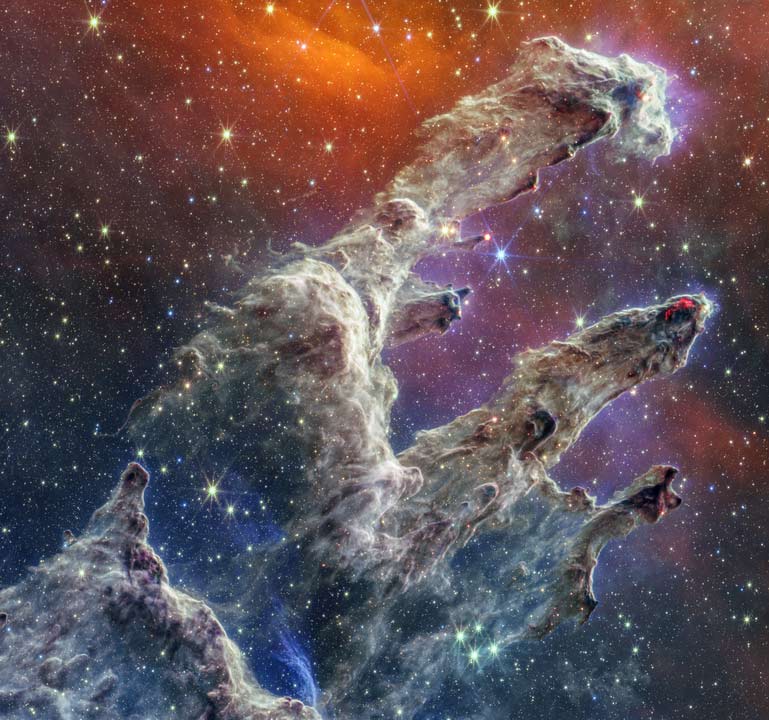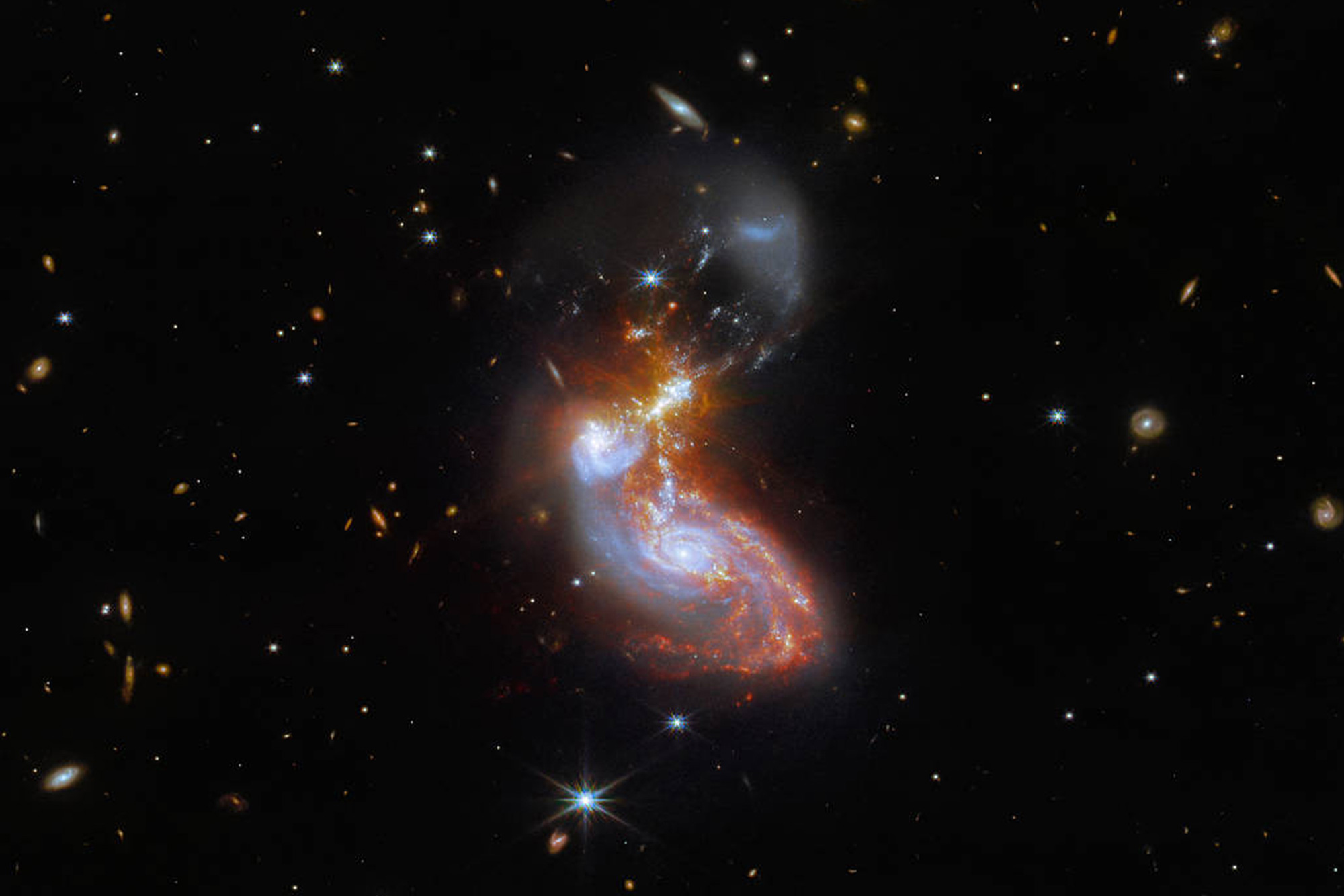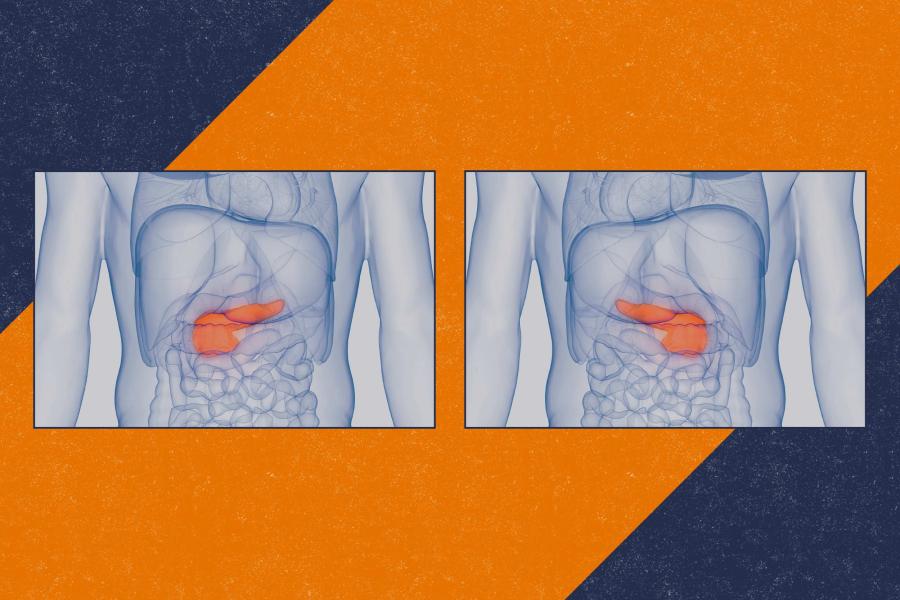The James Webb Space Telescope has provided scientists with previously unimaginable details of galaxies millions of light years away. Now astronomers including the University of Virginia’s Aaron Evans are using the stunning images and data to study what’s happening at the cores of other galaxies.
Evans is among the astronomers leading the first round of 13 Early Release Science projects selected by NASA and its partners, the European Space Agency and the Canadian Space Agency, to test the Webb Telescope’s capabilities.
Wednesday night, Evans will appear on the PBS science series “NOVA” to discuss what he and others have learned already from the Webb Telescope and its images of faraway galaxies, stars and exoplanets.
“It’s taken 300 million years for the light from these galaxies to reach us,” Evans said, “so we’re basically seeing these galaxies as they appeared 300 million years ago.”

UVA astronomer Aaron Evans and a team of scientists are poring over images from the space telescope to better understand the “engines” that create galaxies. (Photo courtesy of NASA)
The international research team led by Evans and Lee Armus of the California Institute of Technology/IPAC in Pasadena is studying the activity of a class of interacting galaxies known as luminous infrared galaxies. These galaxies are the collision of gas-rich spiral galaxies like our own Milky Way galaxy.
That means the scientists are examining essentially a preview of what will happen in 5 billion years, when our Milky Way is expected to pile into the nearby Andromeda galaxy.
The Webb Telescope’s combination of high-resolution and infrared-detecting instruments has made it possible for astronomers to pinpoint the precise locations of what they call the “engines” of these galaxy mergers. As galaxies combine, the gas between stars compresses to form intense bursts of new stars and to fuel massive black holes at the centers of mergers. Dust in these mergers blocks visible light from starburst regions and active black holes, but longer wavelengths of light, such as infrared, can escape and be detected by the Webb Telescope.
Evans and his collaborators have published eight academic papers thus far on the four merging galaxies they are studying. One of their Webb Telescope images, the merger IIZw096 roughly 500 million light-years away, was presented to Vice President Kamala Harris and French President Emmanuel Macron during their meeting in November.
As detailed in the November issue of Astrophysical Journal Letters papers by Evans and professor Hanae Inami of Hiroshima University, the Webb Telescope is finding compact, energetic “starbursts” and active black holes that are hidden from visible wavelength telescopes such as the Hubble Space Telescope.
A black hole forms a disk of material around it which “slowly feeds it,” Evans said. “We call it an accretion disk.
“And so, the accretion disk is under heavy strain, just from the strong gravity of the black hole. And what can happen is that the accretion disk itself can be so bright and produce so much energy that it can outshine all of the stars in the galaxy,” Evans said. “It’s pretty incredible, just an incredible release of energy.”
These Early Release Science studies are just the first step in the type of research astronomers can accomplish with the Webb Telescope’s capabilities.
“We’re just at the point where we’re starting to get the results,” he said. “It’s all very exciting.”
“New Eye on the Universe,” the latest episode of “NOVA,” featuring interviews Evans and other Webb Telescope researchers, is scheduled to premiere Wednesday. Check your local PBS listings for the airtime in your area.
Media Contact
Senior Writer, Office of the Dean College and Graduate School of Arts & Sciences
ljp2h@virginia.edu 434-243-3440
Article Information
June 20, 2025






